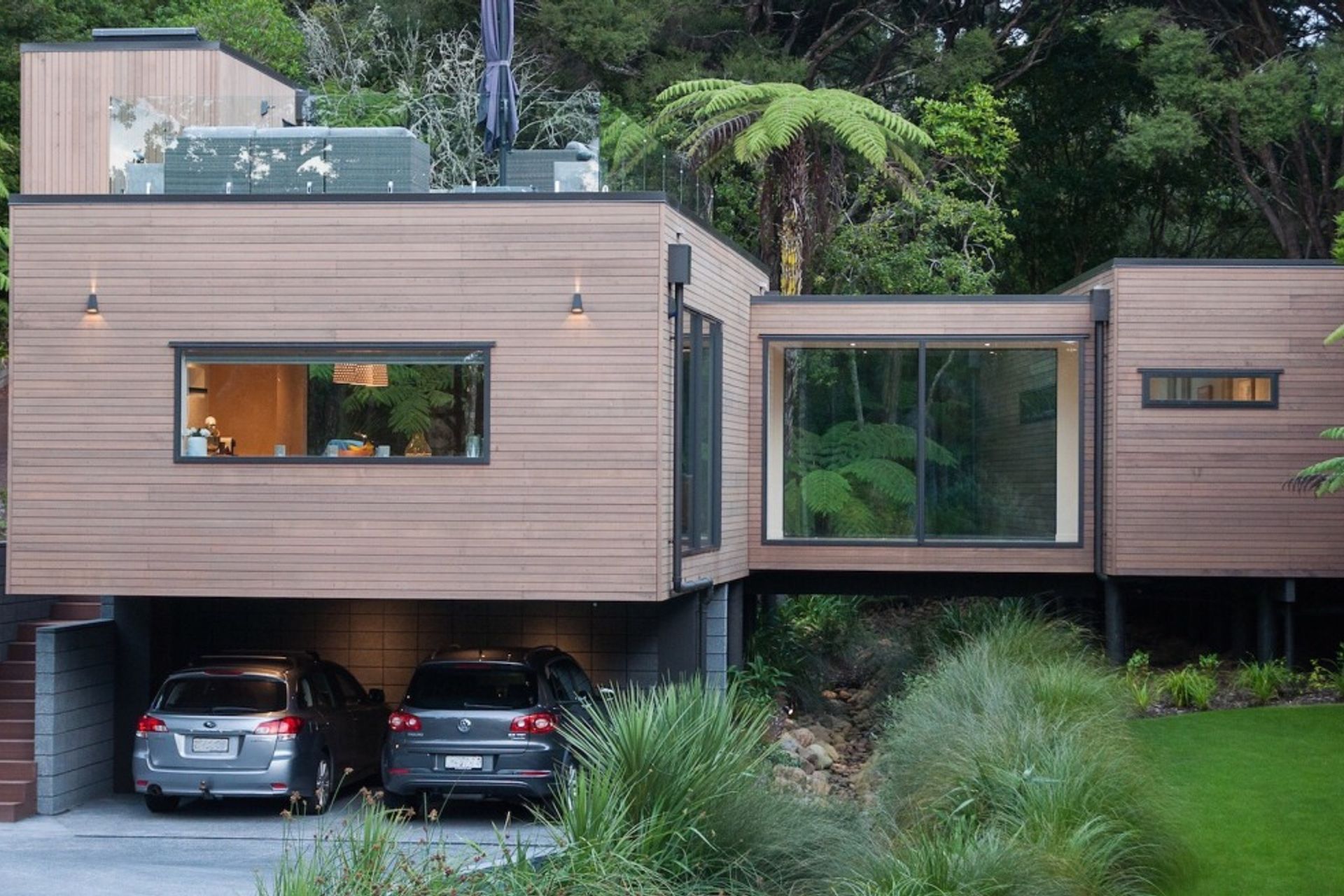Timber cladding: the importance of maintenance

We all know the familiar sight of a house in need of a bit of maintenance. Maybe it’s a build-up of dirt, flaking oil or stain, or mould and lichen starting to spread. These are all signs that the oil or stain is need of some attention. Mould and lichen don’t grow on the oil or stain, they start their growth on dirt on the surface. But maintaining cladding is often seen as a cumbersome job; and as a result, one that is too frequently overlooked.
Recent changes to the Building Code mean most timber cladding manufacturers provide proprietary systems, these such systems require not only the correct materials being supplied and installed but also that timber is correctly maintained to ensure the required durability is met. In addition in order to have a new build signed off, there must be a maintenance programme in place for timber cladding.
That change hasn’t come soon enough for timber devotee Jon Pearson, who founded Dryden nearly two decades ago with the aim of improving the way we deal with timber cladding.
“The biggest problem with timber cladding is simply that people aren’t maintaining it as they should,” Jon says. “Often people will go 10 years or more without doing any maintenance when it really needs to be something that is done regularly.”
Generally the first thing that is noticeable when timber cladding isn’t maintained is the cosmetic appearance of the timber. “It starts to look faded or light and anaemic, especially in north-facing exposed areas.”
Aside from the aesthetic side of things though, once a stain starts to deteriorate, it allows moisture to get into the timber, which causes cupping, warping and splitting. “Oils and stains are designed to repel water. Once a wall looks wet, that is, water doesn’t bead off it anymore, that’s when these sorts of products have deteriorated.”
Most product manufacturers recommend an annual house wash, and either annual or bi-annual maintenance. “Every product is different, but it can range from 12-monthly maintenance cycles right through to three or five-yearly,” Jon says.
Timber stains adhere to the surface of the timber, which means they face some inherent issues, causing them to require maintenance more often than products like low solvent oils.
“Stains contract and expand at a different rate to the timber because they are operating separately; they are on the surface of the product, rather than a part of the timber. Eventually, with these different rates of contraction and expansion caused by temperature variations during a normal day, they delaminate, crack and peel and that’s when they allow moisture into the timber and stop working as the waterproof barrier they were designed to be.”
Dryden WoodOil, in contrast, exists within the timber, rather than on its surface, so in the heat and cold, it contracts and expands with the timber, working as one entity rather than two. “The benefit of this is that when this product starts to age, the differences are only cosmetic. Oils retain their integrity over time, still working as they were designed to. What changes is their sacrificial aesthetic colour quality.”
When stains deteriorate over time and start to crack or peel, they lose their waterproofing qualities and the timber starts to silver underneath them. With WoodOil, the colour fades out with exposure but it remains waterproof because the oil is always in the timber.
Dryden WoodOil is a product that can be applied during the manufacturing process or on site, and requires an annual water wash. “To maintain Dryden WoodOil can be much easier to maintain than other oils or stains. If another coat is required, recoat over the clean oxidised WoodOil colour pigment every few years to return it to its former glory, even if it’s been left too long” Jon says. “It’s a very simple and straight-forward process. Whereas with the stains and oils, you have to wash them all back, get rid of all the loose, oxidised and broken-down product and often apply two coats to maintain, possibly even requiring a full strip back.”
“The real benefit of Dryden WoodOil is that even if it isn’t maintained to retain its aesthetic qualities, it retains its integrity and doesn’t ever need to be stripped back and reapplied. It can just be touched up in sections where necessary.”
In New Zealand, the harsh summer sun affects stains, and if they are broken down in any way during this part of the year, when it starts to get cold and wet in winter, the problems are amplified as moisture creeps into the timber.
“The most important thing with timber cladding, whatever the oil or stain used, is that is must be maintained regularly. This doesn’t necessarily mean the whole house needs doing either. It can simply mean an annual wash and touch ups only in the sections that need attention.”
Get in touch with Dryden on ArchiPro here to find out more about how to maintain your timber cladding or set up a maintenance plan.



